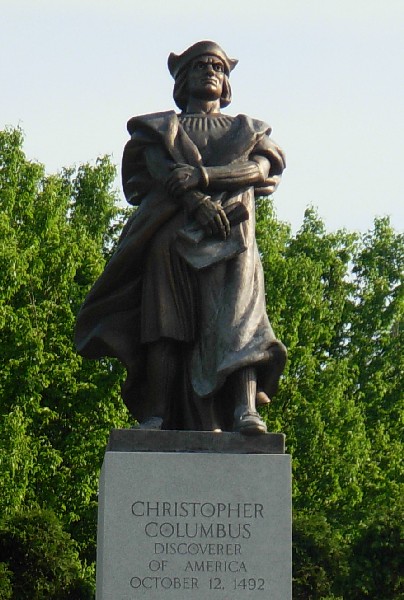14 October 2013
When I learned American history in grade school, Christopher Columbus’ arrival on October 12, 1492 was Day One. So little was said of the people and habitat that preceded his landing that it seemed nothing happened until he got here. I learned that North America was an empty wilderness, barely inhabited. By the time the English settlers arrived it was indeed empty, but it wasn’t like that before the first Columbus Day.
My perception of the western hemisphere changed forever when I read 1491: New Revelations of the Americas Before Columbus by Charles C. Mann (Knopf, 2005). Examining scientific, historical and archaeological evidence, Mann describes what the continents were like before European infectious disease unwittingly changed everything in less than 200 years. For example…
In 1491 the human population in the Americas was greater than that of Europe, the Central Mexican Plateau the most densely populated place on earth. Unfortunately American Indians had no immunity to European diseases. Once the flame was lit their contact with each other and with escaped pigs from the Spanish expeditions fanned the plagues across the continents over and over again. In the 150 years between First Contact (the first Columbus Day) and the first English settlers, 95% of the American Indian population died.
This emptied the hemisphere of its keystone species — humans. Without the agricultural and hunting pressure of 100 million people the forest grew and other species took over. For instance, Mann explains that passenger pigeons and bison were not numerous when American Indians ruled the continent but their populations exploded in the sudden the absence of humans. Wow!
Sometimes while hiking I find a trace in the forest of a former homestead — a row of stones that bordered a field, an apple tree engulfed by weeds, a Norway spruce alone in the woods. Nature took over the site but I can see the past because someone told me what to look for. The settlers who arrived in the 1600’s found the continental equivalent of old field succession but no one was there to explain it.
Mann’s book gave me a window on the world before Columbus Day. If you haven’t read 1491 I highly recommend it.
(statue of Christopher Columbus by Frank Vittor, erected by the Sons of Columbus in Schenley Park, Pittsburgh, in 1958. Photo from Wikimedia Commons. Click on the caption to see the original)

A great book…very informative. And his followup, 1493: Uncovering the New World Columbus Created, is also really good. It talks about how the European activities in the New World forever changed the rest of the world, including introducing American food plants that became staples for the people in the areas where they were introduced, and also the evolution of the problem of having monocultures as food sources, and agribusiness growing out of the exportation of bird guano from the Americas to Europe. It also discusses the distribution of plant diseases from the Americas and the issues that have arisen from the efforts to eradicate those diseases. Really fascinating reading.